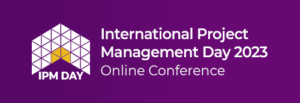By Scott Morton
November 29, 2023
Crisis!
When a crisis hits, effective communication can be the difference between chaos and control, confusion and clarity, panic, and preparedness. Whether it is a data breach, cyberattack, global pandemic, or unforeseen event, a robust capability to handle crisis communication is paramount. This is where the Critical Communication Capability® Framework steps in, serving as a universal guiding light for candidates in the often-tumultuous landscape of crisis management.
The Problem
The question is not if—but when—your organizations will face critical situations. In the past, companies have tried to coordinate such responses across different departmental silos, such as IT, operations, legal, regulatory, executive communications, employee communications, and public relations, each using their best practices.
Unfortunately, this has led to disastrous responses to critical situations. One group may know what a holding statement is, while another does not; one executive may know how to handle press conferences and interviews; another does not; one group may know SEC rules for disclosure, while another does not. A lack of a shared understanding, terminology, and practices has resulted in missteps that lead to critical damage in key areas of organisations, requiring rework to fix miscommunications, bad decisions, and actions.
But how does this apply in the real world? It is noteworthy that numerous companies, regardless of their size, have encountered critical situations, and we don’t have to search extensively to find examples:
In 2021, the real estate title insurance company First American experienced the second-largest data breach in history, with almost 900 million records compromised. Yahoo! holds the record for the most significant breach, with 3 billion accounts impacted in 2013. Additionally, Facebook faced a critical situation where 540 million records were posted publicly as plain text on Amazon servers. From a financial standpoint, Capital One was hit hard by hackers who posted the personal information of 106 million users. Unfortunately, these are just a few of many incidents, which begs the question, is there a way to prevent this issue? Or manage it properly from all departments to safeguard the brand’s reputation, ecosystem health, legal standing, and financial position?
The Solution
A new framework has recently been released for organizations to get everyone on the same page and collaborate for well-orchestrated responses to critical situations. The framework is called Critical Communication Capability® (CCC®).
The CCC has been designed specifically for digital organizations to avoid damage to their brand and reputation, ecosystem health, legal and compliance standing, and financial position caused by siloed responses to critical situations.
The certification stands out in its flexibility and universality, recognizing there are no isolated “IT” critical situations, operational issues, or business PR nightmares in today’s digital organizations. All these situations must appropriately involve communication from all departments using:
- A shared approach, objectives, visibility, data, tools, and processes
- A straightforward model that makes the problem space tractable
- A virtuous cycle of continual Agile improvement
- Regular practice and drills to build capability into ‘muscle memory.
The course provides candidates with a comprehensive body of practical knowledge designed to give organizations a shared frame of reference for handling crises more efficiently and effectively. The course has been created by experienced IT and critical communications management experts. The key features of the CCC Framework include:
- An Illustrative case study that highlights crucial concepts
- Tools to help you assess your organisation’s vulnerabilities
- A framework to manage your crisis response
- Detailed guidance for managing key stages of a critical incident
- Several appendices full of valuable practical guidelines
- A helpful glossary of key terms
Individuals can stand out from the crowd through certification by giving employers more confidence in their ability to handle critical situations. They can set themselves apart with their understanding of essential terminology, practices, and principles. Certified individuals have an advantage as employers can trust them to make good decisions, communicate effectively, and work well in crises.
Teams can collaborate more effectively and seamlessly integrate their work with other teams in preparing for, responding to, and following up on critical situations.
Organizations can have well-coordinated crisis communications, decision-making, and actions to avoid negative impacts on their brand, reputation, ecosystem health, legal, regulatory, and financial standing.
Training and Certification
Critical Communication Capability (CCC) certification, offered by APMG International is highly recommended for organizations with diverse teams managing critical situation preparation, response, and internal and external follow-up. As CCC author David Pultorak states, “The chain is only as strong as its weakest link, including partners and suppliers. How confident are you that all your teams, including your partners and suppliers, are well-drilled in critical situation handling and will not be the single point of failure that submarines your critical situation response?”
The CCC training and certification consists of 14 hours of content and a Foundation-level exam. The framework is relevant to a wide range of individuals within digital organizations. It will:
- Help professionals learn and demonstrate the skills they need to handle critical situations.
- Break down silos in digital organizations and provide a shared frame of reference so organizations and teams have a shared objective when an issue arises.
- Cite best practices and drills for detecting and effectively handling problems.
- The CCC self-assessment will help establish a baseline of current capability to respond to critical situations and a roadmap for improving it.
Embracing the Framework: A Call to Action
In an era marked by uncertainty, the Critical Communication Capability certification is a beacon of stability in crisis management. It empowers organizations and individuals to approach crises with a clear and comprehensive communication strategy. By integrating the framework’s components, communicators can provide internal and external stakeholders with the information they need to make informed decisions, alleviate fears, and steer toward resolution.
Communication remains the cornerstone of crisis management when the stakes are high, and the pressure is immense. The Critical Communication Capability Framework is not just a tool—it’s a mindset that propels organizations to communicate with integrity, empathy, and foresight, even in the face of the most challenging circumstances. So, as we navigate the unpredictable waters of the future, why not arm ourselves with this certification to ensure that our communication remains unwavering, steadfast, and capable of weathering any storm?
Scott Morton is a digital media professional with 9 years’ experience of supporting a range of high profile and demanding clients to maximize their revenue via digital platforms and associated marketing.
Typically working in time sensitive high-pressure roles, Scott has led the development and delivery of digital solutions supported by comprehensive and robust data analytics. His work is underpinned by my background in traditional media, and my passion for creative editorial and digital innovation.
Scott currently builds and runs advertising solutions for the world’s largest multimedia news provider, helping FTSE 100, NASDAQ and S&P 500 companies speak directly to over 82 million users.
International Project Management Day Online Conference is available to stream now through February 5th, 2024. Sign up here!
Disclaimer: The ideas, views, and opinions expressed in this article are those of the author and do not necessarily reflect the views of International Institute for Learning or any entities they represent.



